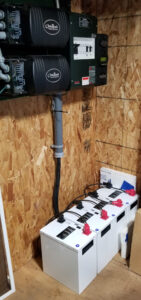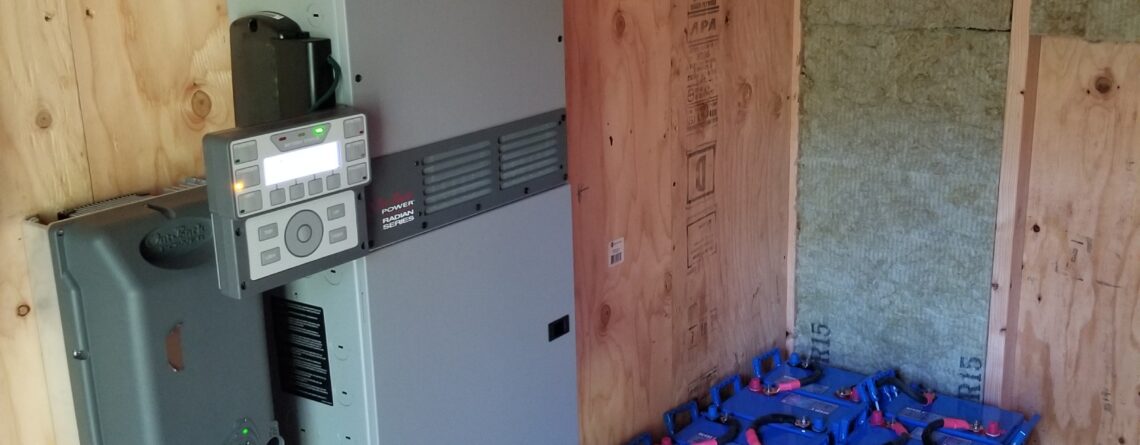Best Batteries for Emergency Backup Power
We all can recognize that the world is experiencing more frequent and larger storms, and more severe wildfires.  And these events are increasing the frequency and duration of utility power outages. Because our modern lives revolve around devices that require electricity, more and more people are looking for emergency backup power solutions to keep them comfortable and safe when they lose utility power. Historically the most common solution to provide backup power has been a gas generator. But many people are hesitant to rely solely on a backup generator for emergencies, in part because of noise concerns. For this and other reasons, home battery backup systems are quickly gaining popularity.
And these events are increasing the frequency and duration of utility power outages. Because our modern lives revolve around devices that require electricity, more and more people are looking for emergency backup power solutions to keep them comfortable and safe when they lose utility power. Historically the most common solution to provide backup power has been a gas generator. But many people are hesitant to rely solely on a backup generator for emergencies, in part because of noise concerns. For this and other reasons, home battery backup systems are quickly gaining popularity.
But traditional battery chemistries have limitations and drawbacks in backup power applications:
- Typically, can only use half of the battery capacity
- Some chemistries need regular cycling and maintenance
- Most maintenance free batteries can’t withstand frequent use
- Relatively short life expectancy
Advancements in Home Battery Backup Power
Energy storage research and development has made many advancements in recent years, thanks in part to the growing number of people who want backup power. Lithium solar batteries have revolutionized backup power systems, and for good reason.
What are the benefits of lithium solar batteries?
- More usable power
- Longer lifespan
- Higher efficiency
- Faster recharging
- No maintenance
But not all lithium chemistries are the same. Particularly when it comes to fire risk and safety.
Types of Lithium Solar Batteries
The two most common lithium chemistries used for grid hybrid and off grid solar are Lithium Ion and Lithium Iron Phosphate. Lithium Ion (Li-ion or Li+) batteries commonly use lithium cobalt oxide (LiCoO2) or lithium manganese oxide (LiMn2O4). Lithium Iron Phosphate (also known as lithium ferrophosphate, LiFePO4 or LFP) batteries are a newer technology that uses a different chemical compound to create the energy storage chemistry required for a battery. Let’s take a look at each of them individually.
Lithium-Ion Solar Batteries
We are all pretty familiar with this type of lithium battery because this chemistry powers everything from cell phones to laptops to electric vehicles. And it also is the chemistry used in the most recognized home energy storage system, the Tesla Powerwall. Other emergency home backup power systems that use Li-ion chemistry are the Generac Power Cell and the LG Chem.
Li-ion solar batteries took home backup battery storage for grid tie systems to a new level. Compared to the sealed lead acid batteries typically used in grid hybrid solar systems, they provide more usable power (deeper depth of discharge), a significantly longer life expectancy (2-3 times), and faster recharging.
But unfortunately, lithium-ion batteries also have a serious downside when it comes to safety. With this chemistry, the compounds heat up during charge and can cause an exothermic reaction if the battery is damaged, overheated, or contaminated. This reaction, known as thermal runaway, is a process in which a battery cell experiences an increase in temperature that leads to the cell disintegrating or short-circuiting, causing a fire or even an explosion. Thermal runaway happens because the compounds are not chemically stable when they come into contact with oxygen or other contaminants. The compounds break down, releasing heat extremely quickly – causing the thermal event. “Safety is a full-fledged design feature with lithium-ion batteries, and for good reason. As we’ve all seen, the chemistry and energy density that allows lithium-ion batteries to work so well also makes them flammable, so when the batteries malfunction, they often make a spectacular and dangerous mess” (RELiONBattery.com).
While the risk of a potential fire in Li-ion solar batteries is modest, it is still a realistic concern and should be factored into any decision on which solar battery solution you choose. This is not something that is necessary when using a lithium battery that offers a more stable chemical basis on which it functions.
Lithium Iron Phosphate Solar Batteries
Lithium Iron Phosphate (lithium ferrous phosphate, LFP or LiFePO2) batteries are a newer lithium compound that is much more chemically stable than lithium-ion compounds. This is because they do not heat up when charging, so they can withstand the types of situations that would cause a lithium-ion battery to become dangerous. This stability not only offers advanced safety, it also means that lithium iron phosphate batteries have a longer life. With both Li-ion and LiFePO4 of batteries available in a variety of storage capacities, it is hard to beat a LiFePO4 battery’s longer life and safer performance.

Another key advantage to lithium iron phosphate is that is it considered a nontoxic chemical compound – something that cannot be said for other lithium chemistries commonly in use. This means safer production, safer use, and safer recycling at the end of the battery’s useable life. Safer can also mean cheaper and/or a much better warranty provided by the producer. It can also mean that when you eventually need to replace your battery storage, it will be easier and cheaper to have your old battery recycled.
“LFP batteries are environmentally safe and structurally stable. They have a lower energy density and low discharge rate. They do not heat up easily and are relatively cooler than other batteries. The chemistry of the battery saves it from thermal runaway, and hence it is considered to be safe for home use.” (Technopedia).
An additional key difference with LiFePO4 home battery systems is that most of them can be used for off grid use, in addition to in grid hybrid and emergency backup power systems. This makes these batteries a real game changer for those living off the grid. Because unlike the flooded lead acid batteries typically used in off grid power systems, LiFePO4 batteries don’t need water replenished or to be equalized. And as a result of their longer life expectancy, the cost of lithium iron phosphate batteries is considerably less over their usable life.
With all these significant advantages of LFP batteries, many solar battery brands use only this chemistry. They include:
- EG4 (our preferred brand)
- Simpliphi
- Sonnen
- Enphase Encharge
- Battleborn
What is the Safest Lithium Solar Battery Chemistry?
At Fire Mountain Solar we strive to serve our community through providing the best power solutions for our clients. We want to ensure our clients get the absolute safest technology, along with the best features and warranty available. Our research, and our professional and personal experience, have brought us to the conclusion that LiFePO4 solar batteries are the best choice when selecting a home battery backup system. This is why LiFePO4 based battery chemistry is our preferred product for lithium battery applications.
Can the Tesla Powerwall, Generac Power Cell or LG Chem be used for off grid?
No. None of these power solutions are currently able to be used off grid, in part because they cannot be charged using a backup generator.

